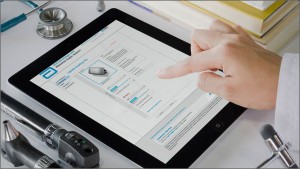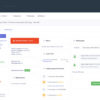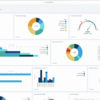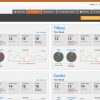 Boardroom and C-level executives are keen to keep tabs on a company’s fundamentals at all times.
Boardroom and C-level executives are keen to keep tabs on a company’s fundamentals at all times.
One way to keep the top-tier appraised of an enterprise’s performance is to make sure they are receiving the latest operations data. That particular tactic may seem fairly obvious. Unfortunately, the exact ways in which an organization can best meet the informational needs of company decision makers may not be as self evident. A large corporate entity generates massive amounts of data. Which data sets will prove relevant for demanding executives? And once the data sets are determined, how will the organization deliver the information to the boardroom? What technologies will be involved?
Those are just some of the questions to be settled when pushing operations data to the front office. Here are a few tips on how to get the job done.
1. Determine the boardroom’s hot buttons
There’s no end to the data you could potentially serve up to the boardroom. Naturally, you will have to narrow your focus to just a few data sets. To do that, you’ll need to work with C-Level executives to get a sense of their most pressing corporate initiatives and challenges. They will probably want to look at data on cost and organizational efficiency, but they may also have specific pet projects and new business ventures they would like to closely track. The organization’s industry and business model will also influence what emerges as the most- wanted data. Executives at a web-based business, for instance, will probably want the latest data on site usage patterns, customer engagement and conversion rates. A manufacturing company’s executives will probably place a high premium on data detailing inventory turns, direct material costs and projected orders. The task of supplying appropriate operations data becomes a lot less daunting once you obtain a general idea of what the executives most want to see.
2. Determine the delivery mechanism
You could certainly package operations data in a series of spreadsheets, but there are other more visually arresting options available today. Operational dashboards, for example, provide a digest of an organization’s key performance indicators in a readily accessible, information-at-a-glance format. A dashboard can run on a variety of platforms including laptops, PCs and, increasingly, mobile devices. In keeping with the spirit of giving the C-Level precisely the information they most want, it might be a good idea to develop a dashboard prototype and invite executives to critique the information presented. The Agile software development technique could come into play in developing a mock up: the dashboard prototyping work could be structured as an Agile sprint. An organization must also consider the underlying dashboard technology. In the past, dashboards were in-house efforts, calling upon business analysts and IT personnel to pool their talents. But with the advent of cloud computing, dashboards can be hosted and maintained offsite. This approach frees the organization from having to dedicate time and resources to the care and feeding of an executive dashboard.
3. Focus on user experience
Once you have identified the relevant data sets and developed the delivery mechanism, you still have to make sure the dashboard’s presentation is graphically appealing and the system is easy to use. A user interface that leaves the C-Level types scratching their heads will negate all the progress you made collecting and presenting operations data. Once again, prototyping will help you gauge executive reaction and determine whether your user interface needs a few tweaks or a massive overhaul. A solid user experience will spell the difference between an effective tool executives will use every day and an expensive toy they will end up ignoring.
Need Help?
It’s not easy developing information tools for boardroom-level executives. If you find yourself struggling, Lithyem offers the ability to launch cloud-based operational dashboards as part of its ElementOne Platform.
Could your top decision-makers benefit from operations data graphically presented in a dashboard? Leave your comments below.
















